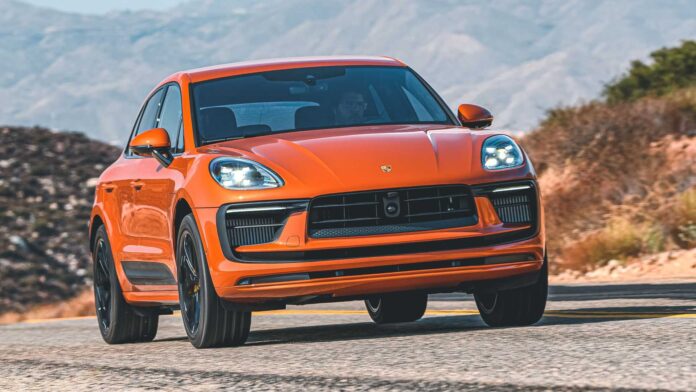We’ve been mourning the 718’s demise this month, but another Porsche is also nearing the end of the line. Less thrilling but far more crucial to a battered balance sheet, the first-generation Macan is not long for this world. It’s had a solid run: 12 years of production so far, with around one million units built. Granted, some of those were the second-generation, electric-only model, but the internal combustion version did most of the heavy lifting.
Porsche pulled the plug on the gas Macan in most European countries last year. Not by choice, but by necessity. The model failed to meet the new cybersecurity requirements under the General Safety Regulation (GSR2) that took effect in July 2024, forcing its retirement from EU markets.
Globally, the writing is on the wall. Production of the original Macan will end in less than a year. Chief Financial Officer Jochen Breckner revealed during the Q3 earnings call that the last units will roll off the line around mid-2026. However, he didn’t rule out the possibility that remaining stock could keep the model alive in non-EU markets until 2027.
The first-gen Macan’s importance can’t be overstated. In 2023, its final year of full availability, it was Porsche’s second-best seller, with 87,355 units, trailing the Cayenne by only 198. While its profit margins can’t match those of the 911, moving tens of thousands of crossovers annually has been a vital source of revenue.
Photo by: Porsche
Normally, when a model bows out, its successor is already waiting in the wings. But not this time. Porsche initially had no plans to replace the gas-powered Macan, assuming customers would naturally shift to the new electric version. It has since realized, however, that there’s still strong demand for a more affordable, combustion-powered crossover positioned below the Cayenne.
Because such a successor wasn’t originally planned, it won’t be ready when the current Macan ends production in mid-2026. Outgoing Oliver Blume has confirmed that a replacement is in the works, scheduled to arrive by 2028 with gasoline and hybrid powertrains.
What should we expect? Porsche says the model will “benefit from synergies” within the Volkswagen Group, hinting at mechanical ties to the new Audi Q5, which uses the Premium Platform Combustion (PPC). That would mirror how the outgoing Macan adapted the MLB architecture from the previous Q5.

Photo by: Porsche
Still, with the original Macan ending in 2026 and its replacement not due until 2028, Porsche will face a two-year gap in one of its most important segments. It’s a rare misstep from Zuffenhausen, but leveraging the Q5’s platform should help speed things up.
When it finally arrives, the new crossover won’t be called Macan, leaving only the EV to carry the name forward. According to Blume, it will be “a very, very typical Porsche for this segment and also differentiated from the EV Macan.”
Backed by the VW Group, Porsche has the resilience to weather the gap. However, the next few years will be anything but smooth, with US tariffs and plunging sales in China combining to create a perfect storm. Bringing back the Boxster and Cayman with gas engines should help restore the brand’s image, following an overreliance on EVs that clearly hasn’t worked out.
